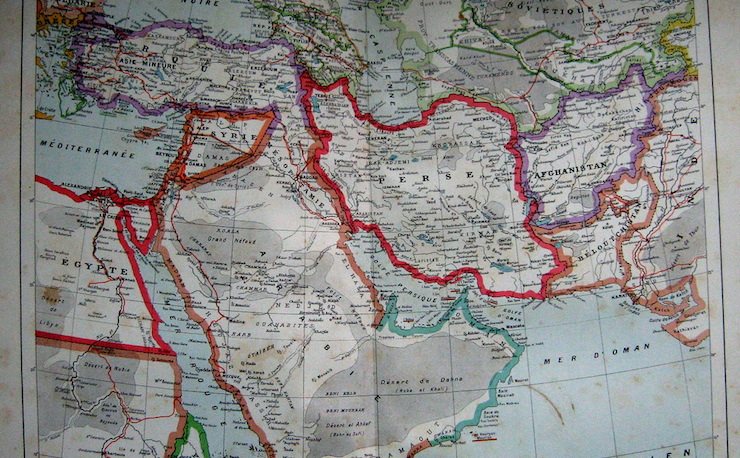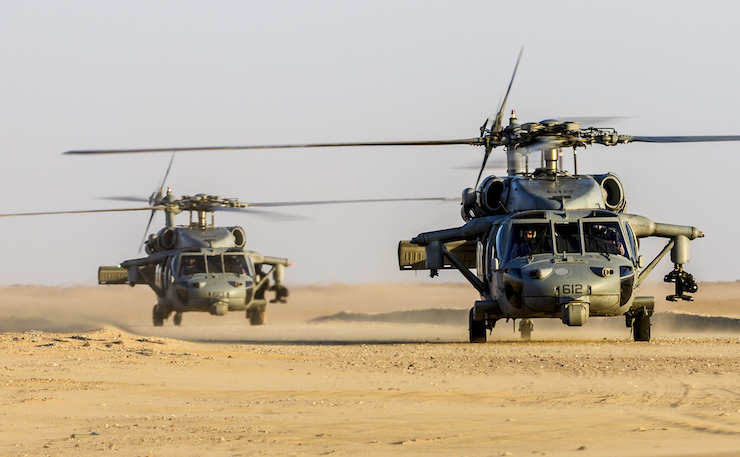Western governments helped set the geopolitical chessboard that created IS. Despite our vulnerability to terror there is no easy way to change the game, writes Ben Eltham.
They say that truth is the first casualty of war. But surely reasoned analysis must be a close second.
Days after the horrendous terrorist attacks in Paris most of what we’ve been fed from the Australian media has been tendentious, bewildered and uninformative. Perhaps that’s only natural. To tell the truth about the threat of Islamic State and the consequences of western foreign policy in the Middle East would be a radical, even dangerous act.
Late in 2014, Australian counter-terrorism expert David Kilcullen attended a top-level conference in Abu Dhabi. Kilcullen has been a first-hand witness to much of the 21st century’s bloodiest carnage: Afghanistan, Iraq, Syria, and in the long corridors of the Pentagon and Foggy Bottom in Washington.
But even Kilcullen was surprised at the bewilderment gripping western and Middle Eastern leaders in the face of Islamic State. “Maybe it’s my jetlag, but people look dazed,” he wrote in his Quarterly Essay this year, “as if in the grip of a hangover. If so, it’s a geopolitical one: the rise of ISIS, the failure of the Arab Spring, the fracturing of Iraq and the spillover of violence from Syria have suddenly, dangerously destabilised the Middle East and North Africa.”
2014 was indeed a calamitous year for the western project in Mesopotamia. In the northern summer, Islamic State launched a blitzkrieg attack in northern Iraq, taking Mosul as tens of thousands of Iraqi soldiers, trained and equipped by the US at ruinous expense, turned tail and ran away. “Thirteen years, thousands of lives, and billions upon billions of dollars after 9/11,” Kilcullen concluded, “any gains against terrorism had seemingly been swept away in a matter of weeks.”
Kilcullen’s glum diagnosis rings especially true in the days since the atrocities in Paris last Friday. Much has been written about Islamic State in recent years, but the truth is that western nations still don’t adequately understand their adversary. IS combines sophisticated propaganda and social media operations with considerable battlefield success. Indeed, the success of Islamic State continues to bewilder and perplex western intelligence analysts and counter-terrorism strategists today.
For example, IS wasn’t thought able to mount complex terrorist attacks in western capitals. The horrifying events of Friday evening in Paris have proved that theory, like so many others about the insurgent Caliphate, comprehensively misguided.
Indeed, if the attacks have proved anything, it’s that, yet again, the west’s strategy in the Middle East is failing. It’s been failing for years, in fact – certainly since Iraq was invaded in 2003, and arguably long before that.
For more than a century, ‘the west’ – chiefly Britain and France, followed by the United States – has redrawn borders in the region. It has written constitutions, installed puppets and made and unmade kings. But we seem further away from peace in 2015 than ever.
The current borders of the Middle East are essentially the result of a World War 1 agreement between Britain and France – a deal that carved out the former provinces of the Ottoman Empire between British and French spheres of influence.
With the war on the western front raging at Verdun, the deal was largely negotiated between mid-level diplomats in Britain’s Colonial Office and France’s Quai d’Orsay. It came to be known as “Sykes-Picot”, after the British conservative MP Sir Mark Sykes, and the French diplomat Francois Georges-Picot.
Needless to say, the people of the lands to be partitioned were not consulted. The treaty was secret and was only revealed when the new revolutionary government in Russia decided to publish it in 1917.
At the time, the British were also pursuing secret negotiations with several factions of Arab nationalists, including the forces of Ibn Saud, a Wahhabist who would establish military hegemony over the holy cities of central Arabia, as well as Hussein bin Ali, at that time the Sharif of Mecca, whose sons would end up on the thrones of Syria, Jordan and Iraq.
This history is still little-known to contemporary westerners, but it helps to explain the doleful course of Middle Eastern history since 1918. Both Britain and France practiced a pernicious form of imperialist divide-and-conquer, whose consequences are still playing out today.
France, for instance, played up ethnic tensions in the Levant, encouraging the Alawite minority to enter the Syrian army as a bulwark for the incipient Syrian state. So did Britain, whose Colonial Office proconsul Gertrude Bell redrew the country’s borders and stoked ethnic tensions in Iraq in the 1920s.

Another consequence of imperialism, in the Middle East as in Africa, has been an enduring deficit in liberal institutions, and a concomitant tendency for authoritarian military rule. Middle Eastern states have tended to be weak, in part because western powers preferred them that way, not least because that would enable them to plunder their natural resources, and secure critical trade routes through the Suez canal to Asia.
American influence in the region has scarcely been more positive.
Notoriously, the CIA was the key planner and backer of the 1953 coup that removed Iran’s constitutional Prime Minister Mohammed Mosaddeq, installing Reza Pahlavi as absolute monarch. Similarly, Iraq before 1958 was essentially an Anglo-American satrapy: Britain had reoccupied the country during the Second World War, and the US had actively supported the Hashemite monarchy of Faisal II. After Faisal was overthrown and murdered by pan-Arabist officers in 1958, the US poured vast aid and support into the Iran, and agitated against Iraq as a Soviet satellite. After the Shah was overthrown by the Islamist Revolution, the US switched sides again, throwing money and arms behind Saddam Hussein in his brutal war against the Ayatollahs.
Of course, the pivotal blunder of the contemporary struggle came in 2003, when George W. Bush and his allies Tony Blair and John Howard took the United States, Britain and Australia to war against Iraq. While Saddam and the Ba’ath regime were quickly toppled, the ‘Coalition of the Willing’ proved manifestly unable to govern the territories they won. The Iraqi state vanished into thin air; what remained was lawlessness, anarchy and terror. The result was the Iraqi insurgency of 2003-08, a brutal struggle in which the US struggled to create a viable post-Saddam Iraq, while countless warlords and desperados fought a Darwinian struggle to carve out streets, suburbs and eventually provinces as insurgent leaders.
Among the most dangerous of those chancers was a low-level drug dealer named Abu Musab al-Zarqawi, a Jordanian who ended up in Iraq shortly before the invasion. Zarqawi had converted to militant Islam in Jordanian prison, then travelled to Afghanistan to train under the Taliban; although loosely loyal to Al Qaeda, he was always looking for more individual forms of glory. As the insurgency exploded in 2004 and 2005, he pledged allegiance to Osama Bin Laden leading an organisation called the Organisation of Al Qaeda for Jihad in Mesopotamia – generally now called Al Qaeda in Iraq, the lineal ancestor of Islamic State.
The Iraqi insurgency is the essential background to understanding Islamic State and its penchant for horror and ultra-violence. In the maelstrom of post-Saddam Iraq, Zarqawi and his followers realised that horrifying violence would not just damage the Iraqi state, but would also destabilise Iraqi society itself, creating a vacuum that Zarqawi’s thugs could move into and control. The tactic is not new – it bears resemblance to the tactics of Russian revolutionaries before 1917, or of the Algerian FLN in the 1950s. Violence begets violence, which allows the bad men with guns and bombs to consolidate their power.
IS emerged from this maelstrom, surviving severe losses during the Surge in 2007-08 to explode into the vacuum created by the chaos of the Syrian civil war in 2011. We don’t know a lot about its mysterious leader Abu Bakr al-Baghdadi, but we do know he was incarcerated, along with many future IS leaders, in the notorious Camp Bucca in 2004.
Bucca became a finishing school for terrorists, as the future leaders of IS networked and plotted. From there Baghdadi either escaped or was released back into the insurgent underground, where his manifest skills in organisation and command saw him rise quickly through the ranks of an organisation that regularly lost top commanders to drone strikes.
By 2010, Baghdadi was taking over a mature insurgent organisation at the very time the US was getting out of Iraq, and Syria was imploding. As Kilcullen notes in his recent Quarterly Essay, “[IS] had evolved through consolidation and unification in 2004–06, learnt from its mistakes during the Surge and developed battle-proven tactics.” It proved far more capable than the motley mosaic of micro-insurgencies in Syria, soon establishing a firm base in northern Syria that allowed it to reach for full-blown rebel statehood. “ISIS fighters had years of tough combat under their belts,” Kilcullen writes. “They were hardened veterans who knew exactly how to fight an urban guerrilla war.”
Why does this history lesson matter? It tells us how we got from there to here. It is the disastrous history of western imperialism, intervention and war in the Middle East that drive terrorism directed at the west. Western jails incubated the leadership of Islamic State, western foreign policy sustained it with thousands of foreign fighters, and failed western-trained armies supplied it with captured tanks, Humvees and explosives.
So we can at least answer the question: why are ‘they’ attacking ‘us’? The answer, as it has tended to be for guerrillas and terrorists throughout history, is political.
The most rigorous analysis of suicide bombings in recent decades has been carried out by US social scientist Robert Pape. After analysing thousands of attacks, Pape concluded that the motivation was not ideological or religious. It was political.
“What over 95 percent of all suicide attacks since the 1980s have had in common is not religion but a specific strategic objective,” Pape wrote in 2010, “to compel a democratic state to withdraw combat forces from territory the terrorists consider their homeland or prize greatly.” Whatever the ghoulish particulars of IS, a political goal of compelling western forces to abandon the Middle East remains the key motivator for both IS and for much of the other terrorism we’ve seen in recent times.
Throughout 2015, as IS continued to consolidate its territory, western powers continued to look for ways to degrade it. But there is no easy answer to the conundrum of Islamic State itself, or of radical Islamic terrorism more generally.
Western nations are inherently vulnerable to terrorist violence of any stripe, for reasons that are more technical than ideological. It is relatively easy to kill innocent civilians in a major metropolis. As the frequent mass killings in the United States show, the truth is that semi-automatic weapons make any urban settlement a soft target. Even Israel, the most locked-down democracy in the world, cannot prevent terrorist attacks, so there is little reason to believe Britain, France or any other western nation can stop it too.
But if this is the bad news, the good news is that the threat posed by Islamic terrorism is almost certainly small, and certainly not existential. Islamic State has shown it can attack western cities, but this action will almost certainly precipitate western military action that will quickly put the nascent Caliphate under heavy pressure.
Unfortunately, of course, this won’t be enough. There is a military solution to Islamic State: massive conventional war. But, as 2003 showed, the problem is what to do after such military victory is achieved.
There are no easy answers to the geopolitical puzzle. Syria is a patchwork quilt of competing great power interests, with Russia and Iran, Saudi Arabia and the Gulf states, America and the west all seemingly inextricably involved.
In other words, as I’ve long argued at New Matilda, there are no good ‘answers’, and no one ‘solution’ to the crisis. It is apparent that any workable strategy must be essentially political, not merely military, and must deal with the massive deficits of legitimacy and security encountered by ordinary people in the Middle East today. Such remedies that can be conjured are likely to be slow, partial and unpalatable. A century of failure cannot be reversed any time soon.
Donate To New Matilda
New Matilda is a small, independent media outlet. We survive through reader contributions, and never losing a lawsuit. If you got something from this article, giving something back helps us to continue speaking truth to power. Every little bit counts.





